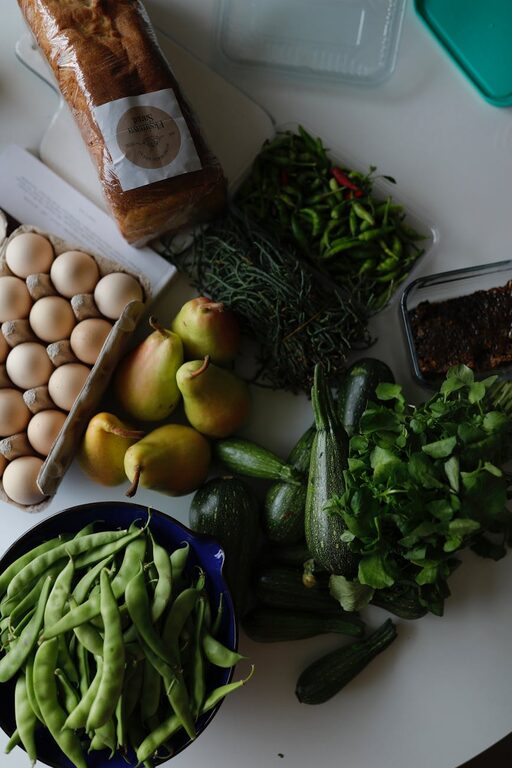How to Plan Meals from Pantry Staples for Easy, Budget-Friendly Cooking

Planning meals from pantry staples is a smart way to save time, reduce food waste, and stick to your budget. Whether you’re a busy professional, a student, or just looking to streamline your cooking routine, using what’s already in your pantry can help create satisfying meals without last-minute runs to the store.
In this post, we’ll guide you through practical steps to plan your meals based on pantry staples, suggest common staple ingredients, and provide tips for turning those basics into tasty dishes your whole family will enjoy.
Why Plan Meals Around Pantry Staples?
Having a well-stocked pantry gives you flexibility and peace of mind. When you build your meals around pantry staples, you:
– Cut down on food waste: Use ingredients before they expire rather than buying more.
– Save money: Relying on pantry items reduces the need for frequent grocery trips.
– Cook faster: Fewer ingredients to hunt for means quicker meal prep.
– Create variety: Combining staples in new ways keeps meals interesting.
Common Pantry Staples to Keep On Hand
Before you start planning, it helps to know which staples are useful to have. Here’s a list of versatile pantry essentials:
Grains and Pasta
– Rice (white, brown, or wild)
– Pasta (spaghetti, penne, macaroni)
– Quinoa
– Couscous
– Oats
Canned and Jarred Goods
– Beans (black beans, chickpeas, kidney beans)
– Tomatoes (diced, crushed, or sauce)
– Tuna or salmon
– Coconut milk
– Broth or stock
Baking and Cooking Basics
– Flour (all-purpose or whole wheat)
– Sugar (white, brown, or powdered)
– Baking powder and baking soda
– Cooking oils (olive oil, vegetable oil)
– Vinegars (balsamic, apple cider, white)
– Salt and pepper
Dried Herbs and Spices
– Garlic powder
– Onion powder
– Paprika
– Oregano
– Basil
– Cumin
– Chili powder
Snacks and Extras
– Nuts and seeds
– Nut butters
– Dried fruit
– Soy sauce or tamari
– Honey or maple syrup
Step-by-Step Guide to Meal Planning with Pantry Staples
Step 1: Assess What You Have
Start by taking inventory of your pantry. Check expiration dates and group items by category. This gives you a clear picture of your available ingredients.
Step 2: Choose Your Proteins
Select your protein sources based on your pantry. For example:
– Canned beans or lentils
– Canned tuna or salmon
– Peanut butter or other nut butters (for vegetarian meals)
Step 3: Pick a Grain or Base
Decide which grain or base you want to use for the meal. This could be rice, pasta, or couscous. Having a starch helps create filling dishes.
Step 4: Add Vegetables (Fresh or Frozen)
While the pantry stores dry and canned goods, it’s good to supplement with fresh or frozen vegetables. These can be onions, carrots, bell peppers, spinach, or frozen mixed veggies.
Step 5: Find Flavor Enhancers
Turn to your herbs, spices, and sauces to add depth and flavor. Don’t be afraid to mix and match spices according to your taste preferences.
Step 6: Plan Balanced Meals
Aim to include:
– Protein
– Vegetables
– Grains or starch
– Healthy fats (from oils or nuts)
Step 7: Develop Simple Recipe Ideas
Combine your selected ingredients into easy meals. Here are a few ideas:
– One-pot chili: Use canned beans, diced tomatoes, onion powder, garlic powder, chili powder, and rice.
– Tuna pasta salad: Mix canned tuna, cooked pasta, olive oil, vinegar, dried herbs, and a handful of nuts.
– Vegetable stir-fry: Sauté frozen vegetables in oil with soy sauce, garlic powder, and serve over quinoa.
– Bean and rice bowls: Cook rice and top with seasoned canned beans, salsa made from diced canned tomatoes, and a sprinkle of spices.
Tips for Success
– Keep a running list of staples: Regularly update your pantry essentials to avoid running out of basics.
– Cook in batches: Prepare larger quantities and refrigerate or freeze leftovers for future meals.
– Try new spice combinations: Experimenting keeps dishes fresh and exciting.
– Use pantry apps or meal planners: These can help you organize ingredients and recipes.
– Incorporate seasonal produce: Supplement pantry staples with local fruits and vegetables for freshness and nutrition.
Conclusion
Meal planning with pantry staples is a rewarding way to cook smarter and save resources. It helps you build a foundation of go-to ingredients that can be transformed into countless delicious meals. With a bit of creativity and preparation, you’ll always have something satisfying on the table without the stress of last-minute grocery trips.
Start today by looking at your pantry, picking a few staple ingredients, and trying a new recipe. You might discover some new favorite dishes along the way!
